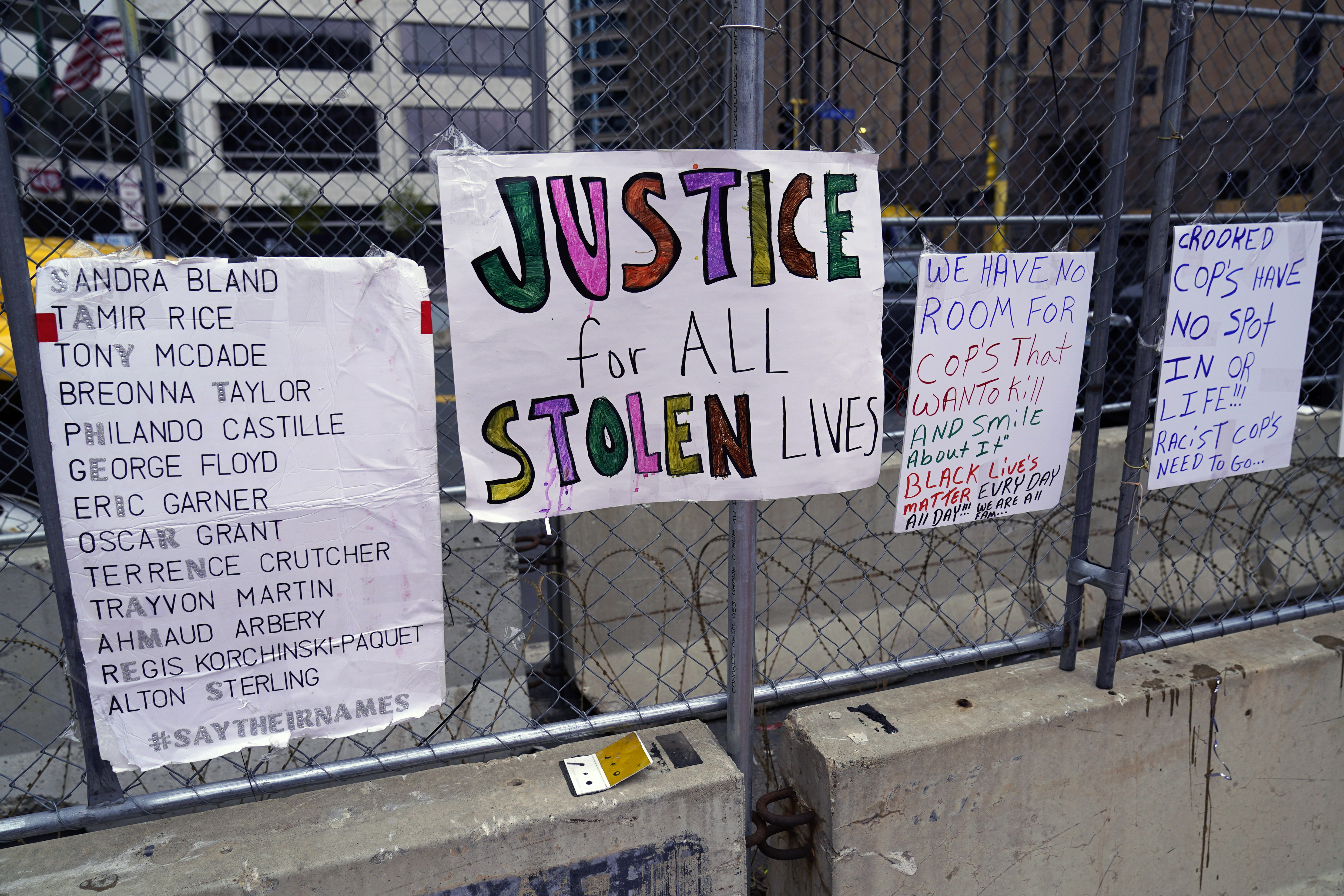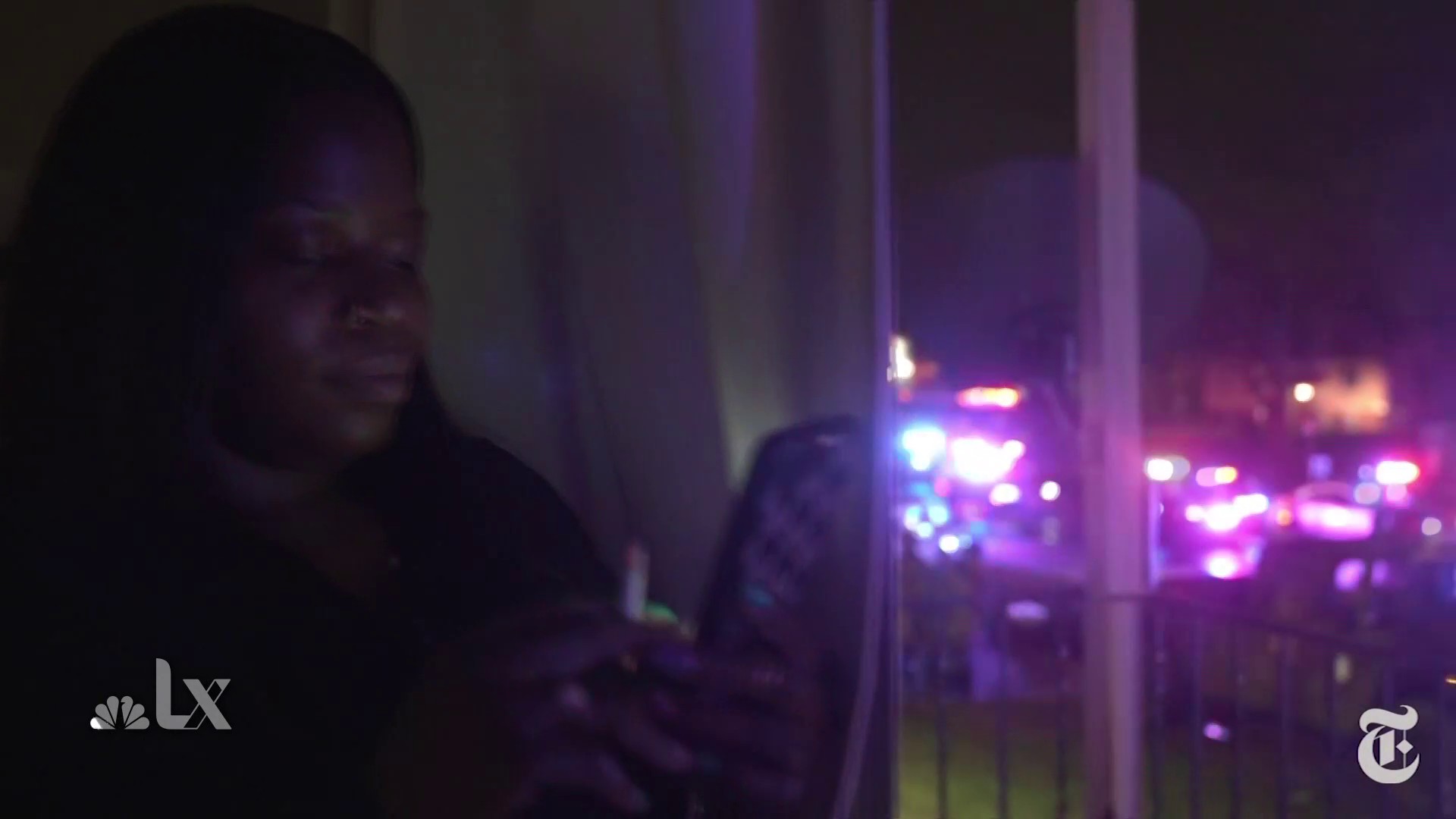Former Minneapolis Officer Derek Chauvin was convicted Tuesday of murder and manslaughter for pinning George Floyd to the pavement with his knee on the Black man’s neck in a case that triggered worldwide protests, violence and a furious reexamination of racism and policing in the U.S.
Chauvin, 45, was immediately led away with his hands cuffed behind his back. He will face sentencing in eight weeks and could be sent to prison for decades.
The verdict — guilty as charged on all counts, in a relatively swift, across-the-board victory for Floyd's supporters — set off jubilation mixed with sorrow across the city and around the nation. Hundreds of people poured into the streets of Minneapolis, some running through traffic with banners. Drivers blared their horns in celebration.
“Today, we are able to breathe again,” Floyd's younger brother Philonise said at a joyous family news conference where tears streamed down his face as he likened Floyd to the 1955 Mississippi lynching victim Emmett Till, except that this time there were cameras around to show the world what happened.
The jury of six whites and six Black or multiracial people came back with its verdict after about 10 hours of deliberations over two days. The now-fired white officer was found guilty of second-degree unintentional murder, third-degree murder and second-degree manslaughter.
Get Tri-state area news delivered to your inbox. Sign up for NBC New York's News Headlines newsletter.
Chauvin's face was obscured by a COVID-19 mask, and little reaction could be seen beyond his eyes darting around the courtroom. His bail was immediately revoked. Sentencing will be in two months; the most serious charge carries up to 40 years in prison.
Defense attorney Eric Nelson followed Chauvin out of the courtroom without comment.
President Joe Biden welcomed the verdict, saying Floyd’s death was “a murder in full light of day, and it ripped the blinders off for the whole world” to see systemic racism.
But he warned: “It’s not enough. We can’t stop here. We’re going to deliver real change and reform. We can and we must do more to reduce the likelihood that tragedies like this will ever happen again.”
The jury's decision was hailed around the country as justice by other political and civic leaders and celebrities, including former President Barack Obama, Oprah Winfrey and California Gov. Gavin Newsom, a white man, who said on Twitter that Floyd “would still be alive if he looked like me. That must change.”
At a park next to the Minneapolis courthouse, a hush fell over a crowd of about 300 as they listened to the verdict on their cellphones. Then a great roar went up, with many people hugging, some shedding tears.
At the intersection where Floyd was pinned down, a crowd chanted, “One down, three to go!” — a reference to the three other fired Minneapolis officers facing trial in August on charges of aiding and abetting murder in Floyd's death.
Janay Henry, who lives nearby, said she felt grateful and relieved.
“I feel grounded. I can feel my feet on the concrete," she said, adding that she was looking forward to the “next case with joy and optimism and strength.”
Jamee Haggard, who brought her biracial 4-year-old daughter to the intersection, said: “There’s some form of justice that’s coming."
The verdict was read in a courthouse ringed with concrete barriers and razor wire and patrolled by National Guard troops, in a city on edge against another round of unrest — not just because of the Chauvin case but because of the deadly police shooting of a young Black man, Daunte Wright, in a Minneapolis suburb April 11.
The jurors' identities were kept secret and will not be released until the judge decides it is safe to do so.
It is unusual for police officers to be prosecuted for killing someone on the job. And convictions are extraordinarily rare.
Out of the thousands of deadly police shootings in the U.S. since 2005, fewer than 140 officers have been charged with murder or manslaughter, according to data maintained by Phil Stinson, a criminologist at Bowling Green State University. Before Tuesday, only seven were convicted of murder.
Juries often give police officers the benefit of the doubt when they claim they had to make split-second, life-or-death decisions. But that was not an argument Chauvin could easily make.
Floyd, 46, died May 25 after being arrested on suspicion of passing a counterfeit $20 bill for a pack of cigarettes at a corner market. He panicked, pleaded that he was claustrophobic and struggled with police when they tried to put him in a squad car. They put him on the ground instead.
The centerpiece of the case was the excruciating bystander video of Floyd gasping repeatedly, “I can’t breathe” and onlookers yelling at Chauvin to stop as the officer pressed his knee on or close to Floyd’s neck for what authorities say was 9 1/2 minutes, including several minutes after Floyd's breathing had stopped and he had no pulse.
Prosecutors played the footage at the earliest opportunity, during opening statements, and told the jury: “Believe your eyes.” From there it was shown over and over, analyzed one frame at a time by witnesses on both sides.
In the wake of Floyd’s death, demonstrations and scattered violence broke out in Minneapolis, around the country and beyond. The furor also led to the removal of Confederate statues and other offensive symbols such as Aunt Jemima.
In the months that followed, numerous states and cities restricted the use of force by police, revamped disciplinary systems or subjected police departments to closer oversight.
The “Blue Wall of Silence” that often protects police accused of wrongdoing crumbled after Floyd’s death. The Minneapolis police chief quickly called it “murder” and fired all four officers, and the city reached a staggering $27 million settlement with Floyd’s family as jury selection was underway.
Police-procedure experts and law enforcement veterans inside and outside the Minneapolis department, including the chief, testified for the prosecution that Chauvin used excessive force and went against his training.
Medical experts for the prosecution said Floyd died of asphyxia, or lack of oxygen, because his breathing was constricted by the way he was held down on his stomach, his hands cuffed behind him, a knee on his neck and his face jammed against the ground.
Chauvin's attorney called a police use-of-force expert and a forensic pathologist to try to make the case that Chauvin acted reasonably against a struggling suspect and that Floyd died because of a heart condition and his illegal drug use. Floyd had high blood pressure and narrowed arteries, and fentanyl and methamphetamine were found in his system.
Under the law, police have certain leeway to use force and are judged according to whether their actions were “reasonable” under the circumstances.
The defense also tried to make the case that Chauvin and the other officers were hindered in their duties by what they perceived as a growing, hostile crowd.
Chauvin did not testify, and all that the jury or the public ever heard by way of an explanation from him came from a police body-camera video after an ambulance had taken the 6-foot-4, 223-pound Floyd away. Chauvin told a bystander: “We gotta control this guy ’cause he’s a sizable guy ... and it looks like he’s probably on something.”
The prosecution’s case also included tearful testimony from onlookers who said the police kept them back when they protested what was happening.
Eighteen-year-old Darnella Frazier, who shot the crucial video, said Chauvin gave the bystanders a “cold” and “heartless” stare. She and others said they felt a sense of helplessness and lingering guilt from witnessing Floyd’s slow-motion death.
“It’s been nights I stayed up, apologizing and apologizing to George Floyd for not doing more, and not physically interacting and not saving his life,” she testified.



